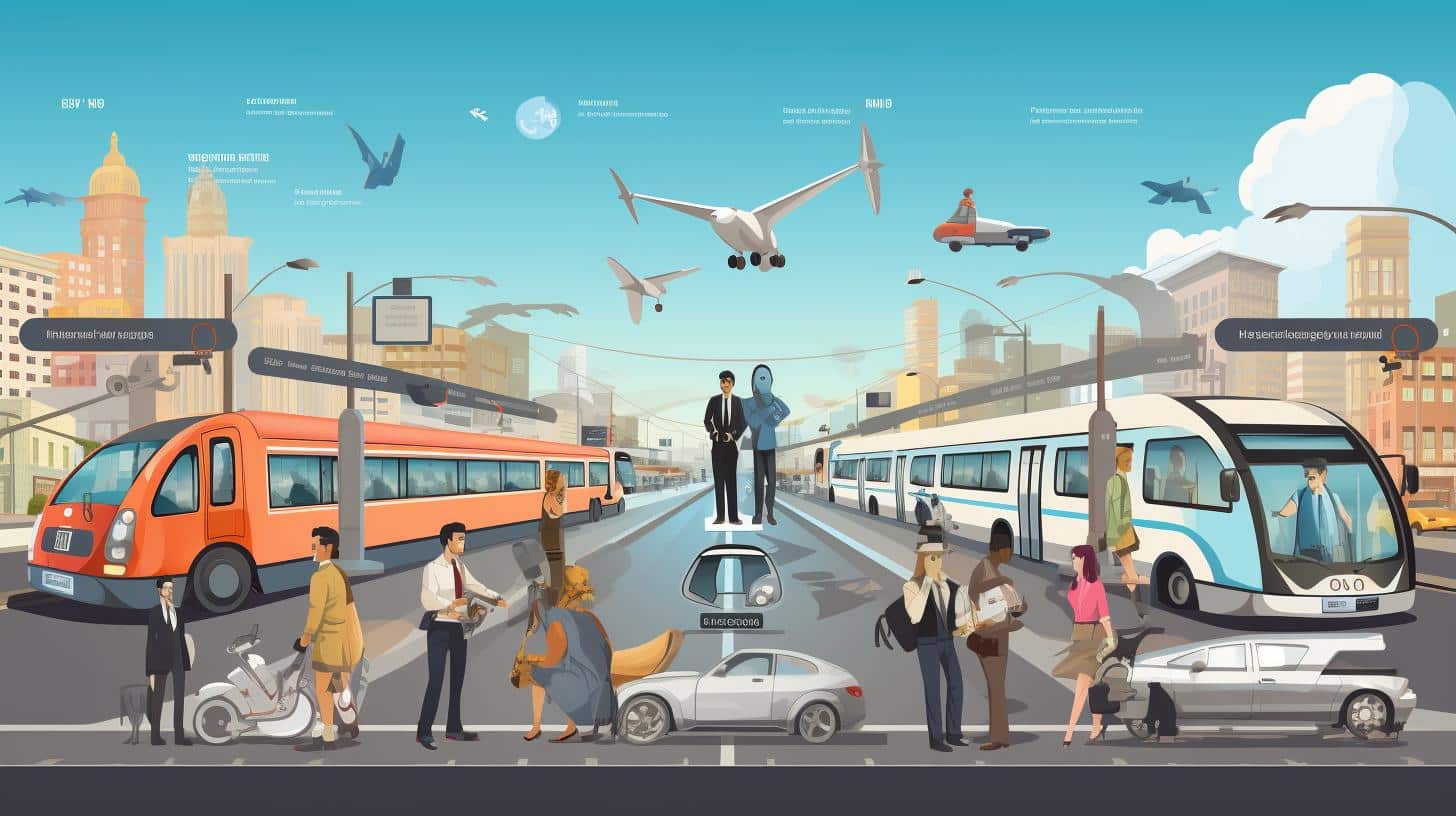The Rise of Uber and the Decline of Public Transportation
In recent years, there has been a noticeable shift in commuting habits with the rise of ride-hailing services like Uber. Traditional forms of public transportation, once the go-to option for many commuters, have been facing increasing competition from these app-based services. This shift has left many wondering about the strengths, weaknesses, opportunities, and threats that arise from this changing landscape. In this article, we will conduct a SWOT (Strengths, Weaknesses, Opportunities, and Threats) analysis comparing Uber and public transportation as commuting options.
Strengths: The Benefits of Uber for Commuters
One of the major strengths of Uber as a commuting option is its convenience. With just a few taps on a smartphone, commuters can request a ride and have a car pick them up at their desired location. This eliminates the need to wait at bus stops or train stations, offering a more personalized and efficient experience.
Another strength of Uber is its availability. Unlike public transportation systems that often have set schedules and limited routes, Uber operates 24/7 and can be accessed in many cities around the world. This flexibility allows commuters to travel at their own convenience, making it an attractive option for those with irregular work hours or travel needs.
Additionally, Uber provides a level of comfort and privacy that is often lacking in public transportation. With Uber, commuters can choose the type of vehicle they prefer, whether it be a standard car or a luxury sedan, providing a more comfortable journey. Furthermore, passengers can enjoy the privacy of traveling alone or with their chosen companions, without the potential crowding and noise of public transportation.
Weaknesses: The Limitations of Uber as a Commuting Option
Despite its strengths, Uber also has its limitations as a commuting option. One of the main weaknesses is its cost. While public transportation often offers affordable options, Uber fares can quickly add up, especially for longer distances or during peak hours. This makes it less accessible for those on a tight budget, or for regular commuters who rely on public transportation to commute to work on a daily basis.
Another weakness is the issue of reliability. While Uber strives to provide a reliable service, there have been instances of drivers canceling rides or not showing up, leaving commuters stranded. Public transportation, on the other hand, follows a set schedule, offering a more predictable and dependable mode of transportation.
Furthermore, Uber’s reliance on private vehicles contributes to traffic congestion and environmental concerns. With more cars on the road, especially during peak hours, traffic congestion can worsen, leading to longer commuting times for all commuters. Public transportation, on the other hand, has the potential to reduce traffic congestion by accommodating a larger number of passengers in a single vehicle.
Opportunities: How Uber is Shaping the Future of Commuting
Uber presents several opportunities for shaping the future of commuting. Firstly, it has the potential to complement public transportation systems by providing a last-mile solution. In areas where public transportation is limited, Uber can bridge the gap by providing rides to and from transit hubs, making it easier for commuters to access public transportation options.
Additionally, Uber’s technology and data collection capabilities can be used to improve transportation infrastructure and urban planning. By analyzing commuting patterns and demand, city planners can make informed decisions about public transportation routes, frequency, and capacity, leading to a more efficient and sustainable transportation system.
Moreover, Uber’s expansion into new modes of transportation, such as electric scooters and bikes, presents an opportunity for promoting greener commuting options. These micro-mobility solutions can help reduce the reliance on private cars and contribute to reducing carbon emissions in urban areas.
Threats: The Challenges Public Transportation Faces in the Age of Uber
Public transportation systems face several threats in the age of Uber. Firstly, the convenience and personalized experience offered by ride-hailing services can lure commuters away from public transportation. The on-demand nature of Uber appeals to those who value convenience and are willing to pay a higher price for a more comfortable and efficient journey.
Furthermore, the decline in ridership and revenue for public transportation systems may result in reduced services and investments. If fewer people choose to use public transportation, there may be a decrease in the frequency of buses and trains, making it less attractive for potential commuters.
Lastly, the aging infrastructure of public transportation systems can also pose a threat. As ride-hailing services continue to grow and evolve, public transportation systems may struggle to keep up with the demand for improved services and amenities. This could further discourage commuters from choosing public transportation as their preferred mode of commuting.
The Changing Landscape of Commuting
The rise of Uber and the decline of public transportation have undoubtedly changed commuting habits for many people. While Uber offers convenience, availability, and comfort, it also comes with limitations such as cost and reliability issues. Public transportation, on the other hand, provides affordability and a more predictable schedule but may struggle with competition from Uber and the need for infrastructure improvements.
As we move forward, it is important to consider the strengths, weaknesses, opportunities, and threats of both Uber and public transportation. Finding a balance between these options, and leveraging the benefits and advancements of each, can lead to a more efficient and sustainable commuting landscape. Ultimately, it is the commuters who will shape the future of commuting by choosing the option that best suits their needs and priorities.













